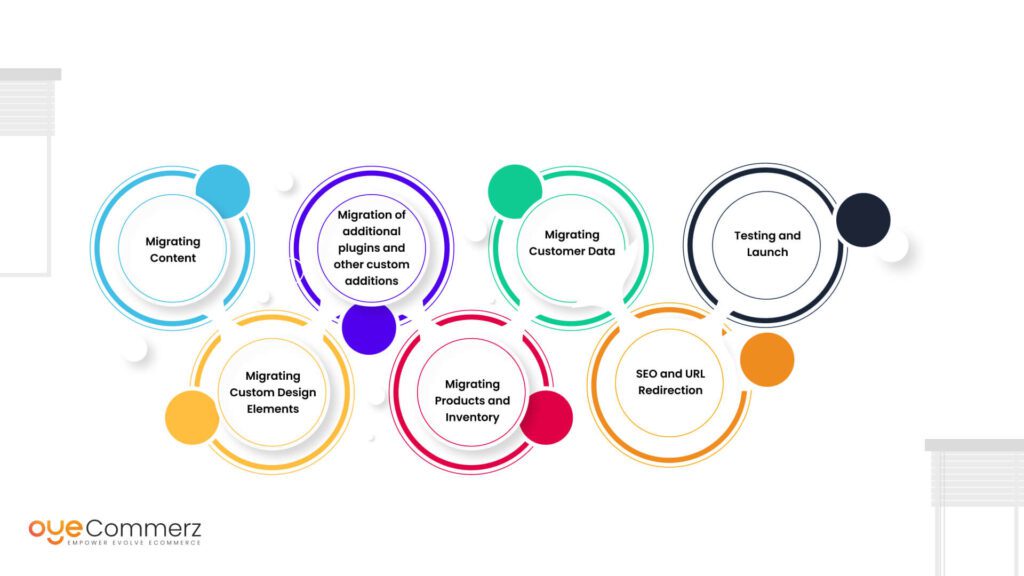In the dynamic world of eCommerce, choosing the optimal solution is crucial for your brand’s prosperity. If you’re at the moment using WordPress and considering a migration to Shopify, you’re not alone. Many businesses are switching to take advantage of Shopify’s robust capabilities, user-friendliness, and expandability. This guide will take you through the process of migrating from WordPress to Shopify smoothly, guaranteeing that you realize your eCommerce potential.
Why Migrate from WP to this platform?
Prior to starting the migration process, it’s crucial to know why this shift can be helpful for your digital storefront:
Accessible Tools: Shopify provides an intuitive system that makes easier store operations, making it easier for non-technical users.
Flexibility: As your company expands, Shopify can accommodate higher traffic and sales without sacrificing speed.
Integrated Features: Shopify provides built-in features for SEO, analytics, payment processing, and additional functionalities, eliminating the necessity for several plugins.
Enhanced Security: With Shopify, you benefit from advanced security features that protect critical customer data.
Steps for a Smooth Migration
Migrating your eCommerce site from WordPress to Shopify involves multiple phases.
Here’s how to achieve a hassle-free transition:
Plan Your Migration Strategy
Kick-off by mapping out your migration strategy. Decide on which aspects of your present site you plan to move, such as:
Item details
Client data
Purchase logs
Posts
Select the Best Migration Option
Considering your requirements, opt for a migration plan that aligns with your business. Professional services delivers various options:
Starter Package: Suitable for boutique stores with limited products.
Standard Migration Package: Suitable for growing businesses with more complex demands.
Premium Migration Package: Perfect for high-volume stores demanding extensive customization.
Backup Your Data
Prior to starting the migration, make sure that you have a full copy of your WP site. This task is crucial in situations where anything goes wrong during the move.
Export Your Data from WP
Use plugins or alternative solutions to extract key content from your WP site:
Items
Customers
Transactions
Blog posts
Import Data into Shopify
When you have your information exported, use Shopify’s migration apps or third-party apps to transfer your content into your Shopify store. Verify that all information is accurately structured and arranged.
Adapt Your Shopify Store
Once uploading content, tailor your Shopify site’s design to match with your style. Look into engaging a developer if you require complex customization.
Configure TransactionOptions and Logistics
Arrange billing solutions and shipping settings eCommerce platform transition in Shopify to ensure a seamless purchase experience for customers.
Apply Search Engine Optimization Guidelines
To maintain your search engine rankings during the transition:
Implement 301 link updates from existing URLs to migrated ones.
Revise metadata.
Adjust images and content for SEO.
Test Your New Store
Ahead of publishing, extensively review your migrated site. Identify any discrepancies, payment processing issues, or missing data.
Launch Your Store
Once everything is in ready, it’s time to publish! Inform the update to your users and motivate them to experience the updated features of your Shopify store.
Post-Migration Support
Even after launching your new store, Shopify migration tips continued help is essential. Consider engaging professionals who can assist with:
Site maintenance
Customer engagement
Enhancing features
Conclusion
Migrating from WP to this platform can be a game-changing move for your eCommerce. By adopting this guide and working with experts like those offered by dedicated providers, you can ensure a seamless transition that improves your business potential. Accept the change and unlock the advantages of Shopify today!

Comments on “Unlocking online retail Growth: The Definitive Guide to Effortless WordPress to eCommerce Migration”